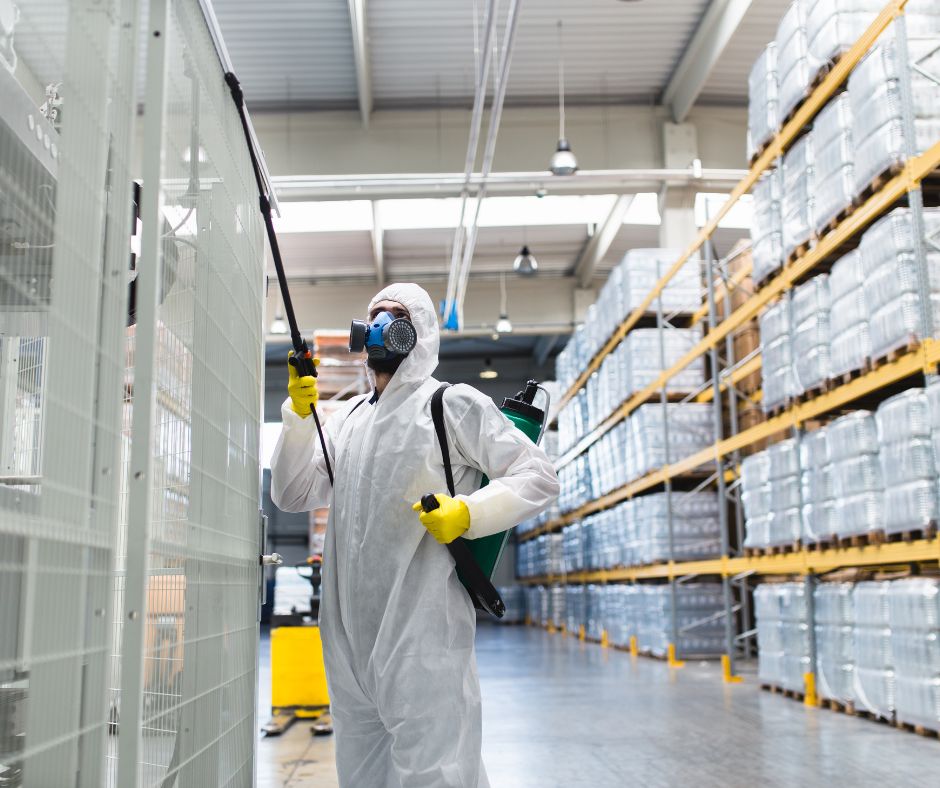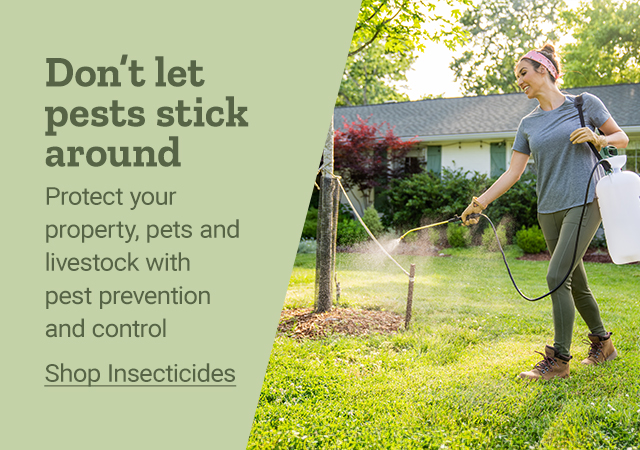Main Benefits of Termite Treatment Port Charlotte for Proactive Protection
Wiki Article
Find Out About the most recent Advancements in Insect Control and Exactly How to Execute Effective Therapy Solutions
In recent years, the field of pest control has observed substantial advancements, driven by the need for lasting and efficient therapy services. Ingenious methods such as Integrated Insect Monitoring (IPM) incorporate environment-friendly exercise with sophisticated innovation, boosting both effectiveness and ecological duty. Additionally, the assimilation of clever technologies and do it yourself techniques has actually empowered individuals to tackle parasite issues better. As we check out these growths, it becomes vital to comprehend exactly how finest to apply these approaches in different setups to accomplish optimal outcomes. The implications for insect monitoring practices might be transformative.Eco-Friendly Insect Control Options
In the last few years, the demand for green bug control choices has actually surged as companies and property owners alike look for lasting choices to standard chemical therapies. This change is driven by expanding environmental understanding and a desire to reduce the health and wellness threats associated with synthetic pesticides.

Environmentally friendly parasite control methods include a variety of strategies that focus on making use of natural materials and practices. Integrated Parasite Administration (IPM) is one such technique, integrating biological, cultural, and mechanical methods to take care of bug populaces while decreasing dependence on chemicals (Wildlife removal services). This holistic approach emphasizes avoidance through habitat adjustment and the intro of all-natural killers, therefore fostering a balanced environment
Another preferred choice is making use of botanical pesticides originated from plants, which often tend to be less unsafe to non-target organisms. Products like neem oil and diatomaceous earth have actually gained grip for their effectiveness in controlling pests while posing very little dangers to human health and wellness and the setting.
Additionally, exclusion strategies, such as sealing entry points and maintaining cleanliness, play a crucial role in environment-friendly pest monitoring. By embracing these lasting methods, individuals and services can successfully handle bugs while advertising a much healthier world for future generations.
Smart Modern Technology in Pest Management
Innovation is improving the landscape of bug monitoring, with clever technology becoming a crucial pressure in improving performance and performance - Wildlife removal services. The integration of Internet of Points (IoT) devices, expert system (AI), and data analytics is reinventing just how bug control experts come close to problems
Smart catches geared up with sensing units can identify pest activity in real-time, sending out immediate signals to drivers. This allows for timely actions, reducing damages and minimizing the demand for substantial treatments. In addition, AI algorithms evaluate historic data to predict parasite actions, making it possible for positive treatments based upon ecological conditions and invasion patterns.
Drones and automated lorries are additionally playing a considerable role in pest administration, giving aerial assessments of huge locations, recognizing hotspots, and also dispersing targeted treatments. These innovations not only streamline procedures yet also improve safety by restricting human exposure to possibly dangerous chemicals.
Additionally, mobile applications equip customers to keep track of insect task and access specialist guidance, promoting a joint approach to pest administration. In general, the fostering of wise technology is establishing a brand-new standard in insect control, highlighting data-driven choices and sustainable methods that eventually benefit both specialists and property owners alike.
Integrated Pest Administration Methods
Integrated Bug Monitoring (IPM) employs an all natural strategy to pest control, incorporating different techniques to successfully manage bug populations while lessening risks to human health and wellness and the setting. IPM focuses on understanding the pest life cycle, their natural enemies, and the ecological community in which they grow.Among the fundamental parts of IPM is keeping an eye on pest populations through routine examinations and information collection. This enables the identification of pest thresholds, figuring out when intervention is needed. Social techniques, such as plant cleanliness, rotation, and habitat control, are essential in minimizing parasite prevalence and advertising plant health and wellness.
Mechanical controls, consisting of barriers and traps, are likewise essential in IPM. These methods can literally remove or prevent insects without using chemicals. When essential, the judicious application of chemical controls is utilized, concentrating on targeted treatments that decrease environmental impact.
Education and cooperation among stakeholders, including farmers, pest control experts, and the neighborhood, are critical for the effective implementation of IPM methods. By prioritizing sustainable techniques, IPM not just addresses pest concerns yet also fosters a healthier ecological community.
Biological Control Methods
Many biological control techniques are increasingly acknowledged for their effectiveness in taking care of parasite populaces while promoting environmental equilibrium. These techniques harness all-natural killers, parasites, and pathogens to reduce pest numbers without relying upon synthetic chemicals. For example, the introduction of ladybugs can successfully regulate aphid populations, while nematodes target soil-dwelling bug larvae.Furthermore, making use of microbial pesticides, such as Bacillus thuringiensis (Bt), provides an environmentally pleasant option for handling caterpillar parasites. These items especially target Rodent control Port Charlotte pest types, minimizing harm to beneficial pests and pollinators. Additionally, conservation biological control stresses boosting habitats for natural adversaries, such as birds and helpful bugs, therefore motivating their presence in agricultural systems.
Study continues to disclose cutting-edge strategies within this field, such as the use of scents to interfere with pest breeding patterns or the advancement of biocontrol representatives via genetic engineering. Implementing these techniques can lead to lasting pest monitoring techniques that mitigate the reliance on chemical treatments, ultimately cultivating healthier communities. As awareness of these techniques expands, they are becoming important elements of integrated bug administration (IPM) strategies, offering a balance between effective pest control and environmental stewardship.
Do It Yourself Pest Control Solutions
As house owners look for reliable ways to tackle bug concerns, DIY insect control remedies have gained popularity for their ease of access and cost-effectiveness. These techniques equip individuals to address invasions utilizing easily offered materials and strategies, typically without the demand for professional intervention.
Additionally, maintaining appropriate hygiene and routine assessments can prevent parasite entrance and nesting (Wildlife removal services). Easy techniques, such as sealing cracks, getting rid of food resources, and decluttering, can dramatically decrease pest populations. Catches, both homemade and readily available, can additionally offer reliable remedies for monitoring and regulating specific pests like insects or rats

Conclusion
The combination of environment-friendly pest control alternatives, wise innovation, and innovative administration strategies offers an extensive approach to reliable insect monitoring. By accepting Integrated Parasite Administration (IPM) and using biological control techniques, along with DIY services, sustainable and liable bug control can be achieved.Environment-friendly bug control approaches incorporate an array of strategies that prioritize the usage of all-natural materials and practices. Integrated Insect Monitoring (IPM) is one such strategy, incorporating biological, cultural, and mechanical tactics to manage parasite populations while minimizing dependence on chemicals. As awareness of these strategies expands, they are ending up being essential components of integrated parasite management (IPM) methods, using an equilibrium in between efficient insect control and ecological stewardship.
The integration of environment-friendly parasite control options, wise technology, and ingenious management techniques provides a thorough technique to efficient parasite monitoring. By welcoming Integrated Insect Management (IPM) and making use of organic control approaches, along with DIY solutions, sustainable and liable pest control can be accomplished.
Report this wiki page